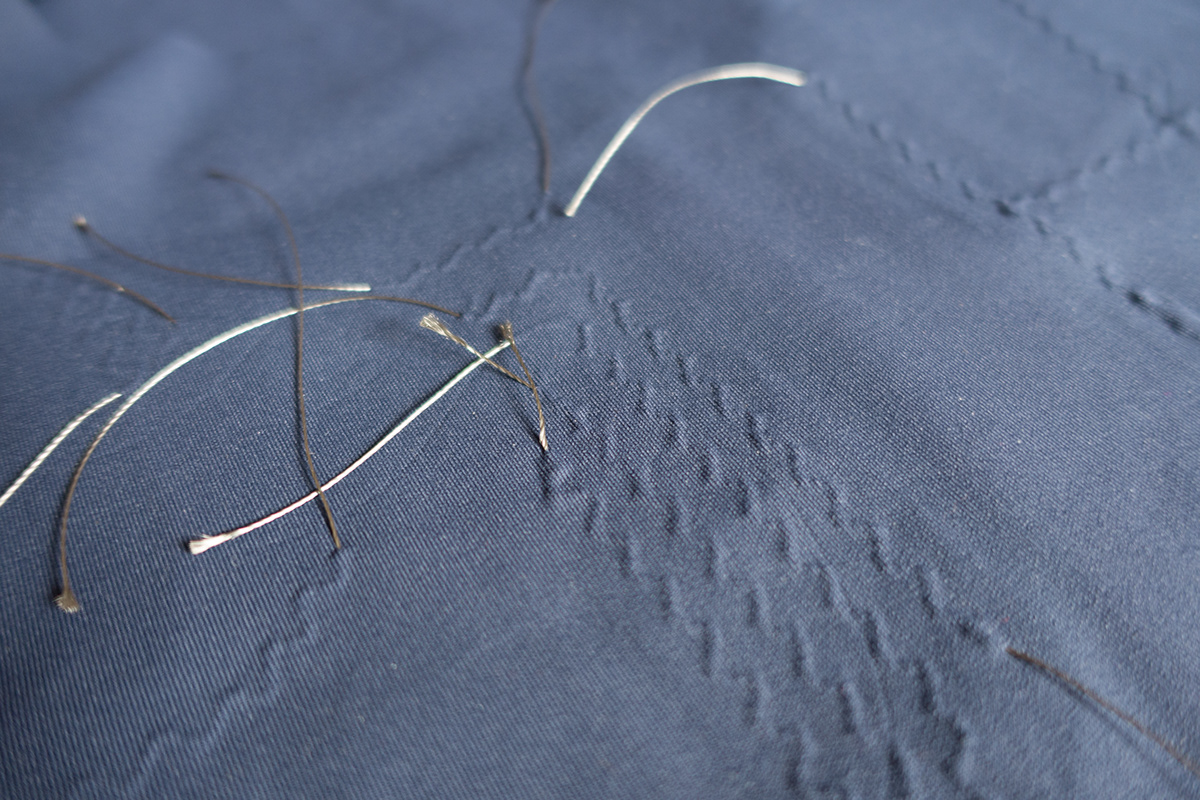
Challenges
Identifying compelling business case for a novel thread-like sensor
Developing and testing processes for embedding sensors into soft garments
Design and prototype wearables with novel thread-like sensors embedded
Outcomes
Shifted focus from luxury goods to needs-based applications
Applied seamless no-sew construction to embed sensors and wiring in a skin safe base layer
Developed new soft connections for textile sensors
Finding a repeatable way to attach sensors
Because the sensor was quite delicate, the patch had to provide a layer of protection while preventing overstretching. A laser-cut pattern was developed to improve activation (stretch) in relation to surrounding material.









Stretchable tracing that doesn't effect signal resistance
The sensor interpreted movement through changes in resistance. Integrating it into soft textiles was hard because most stretchable tracing also causes fluctuation in resistance, which the board picks up as signal noise.
I developed a method for tracing and attaching the sensor to that tracing. It had to be safe against the skin when routed in stretch garments.
I developed a method for tracing and attaching the sensor to that tracing. It had to be safe against the skin when routed in stretch garments.
Bringing it all together in a base layer garment prototype
After coming to understand the material properties of the sensor, constraints were established and a design took shape. Conductive steel thread was used to maintain the best signal. Tracing was routed through an extra layer of material and polyurethane adhesive strategically to direct maximum stretch onto the sensor.




Laser cut sensor patches were assembled, stitched to the tracing, and bonded in place on the exterior face of the garment. The waffle looking patches were designed to avoid direct heat on the sensor and not restrict stretch where the patch is applied.



Sadly, no pictures of earlier prototypes, and the garment with attached sensor patches is available. They were bright red waffle looking things (slightly different from what's shown above) and were awesome.






Reducing workplace back injuries for nurses and nursing support workers
Instead of the initial athletic wearable, the team shifted focus to solving a real problem. Back injuries are very common in nurses and nurse support workers. This pair of scrubs with sensor placement detects risky moves, notifying the wearer so they can be more aware, cautious, and avoid them whenever possible.


Supporting researchers with vector drawings
Outside of prototyping, I was frequently tapped to illustrate research concepts for stakeholder presentations, IP applications, pitch competitions, grants and funding etc.
Illustrating more potential applications











Illustrations for IP & research support





